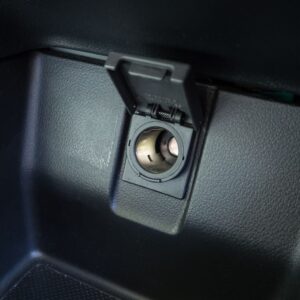You might’ve heard that 12v dehumidifiers for cars are getting popular. These semi-portable little accessories can make a big difference in your vehicle’s cabin. There are other dehumidifier options out there too, of course, all of which can help keep moisture low in the cabin and other areas. Today, we’ll be taking a look at what makes a good car dehumidifier.
Best Dehumidifier for Your Car
Car dehumidifiers have different features, each with its own benefits and drawbacks. The best dehumidifier for your vehicle depends on which features you need or want. Here are some things you should consider:
Type
There are three main car dehumidifier types on the market: electric, rechargeable, and desiccant bags.
Electric
Electric 12v dehumidifiers plug into a vehicle’s cigarette lighter socket and heat the cabin air to evaporate any moisture. They’re popular for being efficient and low-maintenance, but because they use electricity, they might drain your vehicle’s battery if left operating without the alternator running.
Rechargeable
Rechargeable car dehumidifiers use silica gel or other moisture-absorbing materials to bring humidity down. They often run on rechargeable batteries, which means you’ll need to recharge them periodically.
Desiccant Bags
Finally, there are desiccant bags or crystals, which have calcium chloride, silica gel, or other moisture-absorbing materials inside a bag or a plastic container. They’re cheap and easy to position in different areas. However, some variants aren’t reusable or refillable.
Reusability
While many dehumidifiers are reusable, certain types are made to be disposable, one-use items. This is the case for the desiccant-bag types with calcium chloride salts at the bottom of a plastic container.
While disposable dehumidifiers can sometimes be reused with enough work, it might be better to purchase a reusable one from the start. On the other hand, if you only need the dehumidifier once to remove the mustiness from your car, a disposable one should be fine.
Size
The size of the dehumidifier can also determine how much moisture it can absorb. Larger dehumidifiers are suited to larger vehicles, while smaller ones are enough for small vehicles or spaces.
You’ll usually find a dehumidifier’s capacity on the packaging, indicating how many milliliters (ml) or grams (g) of water it can absorb in a certain amount of time.
Power Source
As we’ve mentioned, electric dehumidifiers typically plug into your vehicle’s 12v outlet, and rechargeable ones have batteries that you need to recharge periodically. Consider these factors well when deciding what dehumidifier is best for you.
Brand
Not all dehumidifiers will do well on their promises. It’s best to buy from a trusted brand known for selling eco-friendly and effective products.
Price
Finally, don’t forget to take your budget into account. Electric dehumidifiers tend to be the most expensive, with rechargeable dehumidifiers and desiccant bags coming after. Electric dehumidifiers are usually more effective as well though, so if you live in a humid climate, they might be worth the investment.
Do Dehumidifiers Work for Cars?
Dehumidifiers are best for humid areas where your vehicle’s interiors are more prone to mold and mildew. They can keep your windshield clear in case the moisture inside the cabin fogs up. Surprisingly, dehumidifiers can also help alleviate allergies related to dust mites and more because these allergens prefer moist environments.
Humidity inside your vehicle can lead to unpleasant odors and stains, especially if it leads to mold growth. It can also cause electrical component malfunctions and short circuits because moisture can corrode connectors and weaken electrical connections.
All that being said, if the humidity in your vehicle is worsened by a leak or a gap in the weatherproofing around its doors or windows, have those repaired immediately. Otherwise, your vehicle’s moisture problem will only get worse.
Car Dehumidifier Maintenance
Once you purchase a car dehumidifier, don’t forget to periodically inspect it as needed.
Electrical dehumidifiers need unobstructed air flow and careful monitoring when turned on given their heating element. Meanwhile, rechargeable car dehumidifiers need to be recharged.
Desiccant bags or crystals need to be thrown out and replaced once they’re fully saturated. Some manufacturers might have refill packs for dehumidifiers that use desiccant bags or crystals.
Best Car Dehumidifier Placements
If you have an electric dehumidifier, it’s possible placements can be a little limited. It needs to connect to your vehicle’s 12v outlet, so unless it has a long cable, it’ll likely be placed near the front seats.
A good place would be hidden away so an electric dehumidifier doesn’t clutter your dashboard. Just make sure not to leave it in an enclosed space, otherwise it might not function well or safely. The same goes for rechargeable dehumidifiers.
You can place non-electric dehumidifiers atop the dashboard near the windshield. They can soak up a lot of moisture that way. This is also a good place for the electric and rechargeable dehumidifiers if you don’t mind them being visible.
Always check the dehumidifier’s manual. The manufacturer will likely let you know the optimal places to leave your vehicle’s new dehumidifier.
And there you have it. That’s all you need to know to choose the perfect dehumidifier for your vehicle and your budget. Picking between dehumidifiers for cars can be a little overwhelming given all the options, but it can be simple once you know what you’re looking for.
Any information provided on this Website is for informational purposes only and is not intended to replace consultation with a professional mechanic. The accuracy and timeliness of the information may change from the time of publication.




















